Out of zone: Johor town Kluang eyes spoils from state’s SEZ with Singapore, but some locals flag concerns
Business players in Kluang share their hopes and concerns with CNA as the central Johor district positions itself as a potential satellite city of the state’s special economic zone with Singapore.
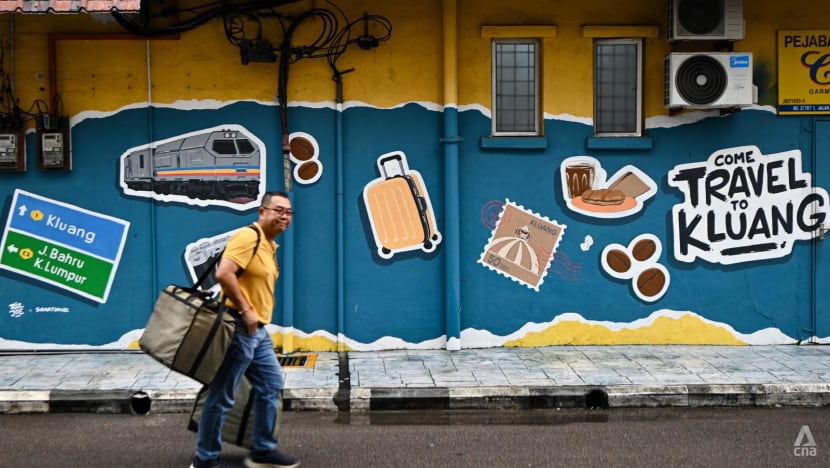
A man walks past a mural in Kluang, Johor, on Jul 22, 2025. With the positive ongoing development of the JS-SEZ, Kluang has been elevated to a satellite town. (Photo: CNA/Zamzahuri Abas)

This audio is generated by an AI tool.
KLUANG, Johor: As companies prepare to set up in the Johor-Singapore Special Economic Zone (SEZ), some Johor towns further away are already feeling the ripple effects of the area’s commercial opportunities.
Located just over 100km away from Johor Bahru, Kluang is seeing increased demand and growing interest from investors and customers, fuelling optimism across its manufacturing, logistics and tourism sectors.
Some local businesses and leaders whom CNA spoke to in the district shared that there has been a 30 per cent increase in enquiries, with some planning to expand their operations as the SEZ begins to generate spillover benefits beyond its core zone in southern Johor.
“Some investments have really spilled over to Kluang district and we have observed some foreign investors or even domestic investors who came here to look for factories (to) expand their businesses and opportunities,” MP for Kluang Wong Shu Qi told CNA.
Johor state’s chief minister Onn Hafiz Ghazi recently identified Kluang as having high potential to be a satellite city to the Johor-SEZ, adding that all 10 districts in the state could benefit from the economic zone which aims to boost cross-border economic connectivity between Singapore and Malaysia.
“Bit by bit, areas surrounding the economic zone are beginning to experience the spillover effects of development. For example, the areas of Simpang Renggam and Renggam in Kluang are already seeing its impact. This progress will gradually expand to other districts,” he said on Jul 6, as quoted by local media.
He likened Kluang’s potential as similar to how Seremban in Negeri Sembilan is known as a satellite city to the Klang Valley of Greater Kuala Lumpur.

Launched through a memorandum in January this year between the Singapore and Malaysia governments, the Johor-SEZ will span 3,571 sq km in southern Johor, nearly five times the size of Singapore, and comprise nine “flagship areas” catering to different economic sectors.
The two “flagship areas” closest by distance to Kluang are Sedenak and Senai-Skudai, which are about 50km and 80 to 90km away respectively, while the other seven are all more than 100km away.
CNA spoke to business owners in Kluang who shared both their hopes and concerns about the potential impact of the SEZ.
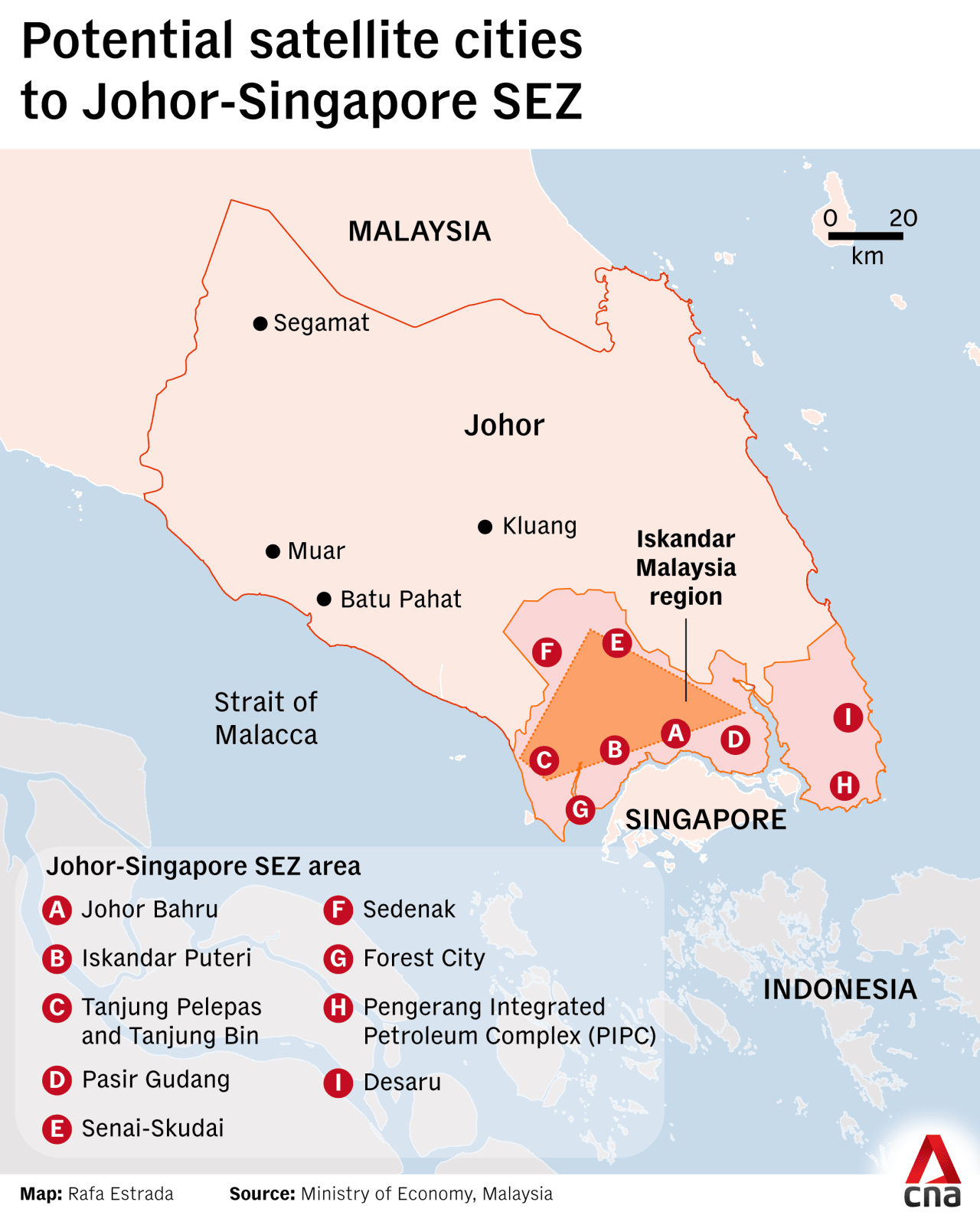
Besides the growing demand, businesses in Kluang said they are optimistic about the infrastructure developments that could position the district as a “logistics hub”, citing better accessibility and lower operational costs compared to the Johor Bahru city centre.
However, a local business leader warned that Kluang’s potential rapid development as a satellite city could strain existing infrastructure and risk eroding the district’s agricultural identity with unregulated growth.
President of the Kluang Chinese Chamber of Commerce and Industry Teo Ee Piau called for stronger cooperation between the state government, Kluang authorities and business stakeholders to ensure that development remains sustainable in the district of over 323,000 people.
“Our goal must be clear - to steer this wave of development so that it benefits the many, not just the few, and ensure that Kluang is not only more prosperous but also remains a place we are proud to call home,” he told CNA.
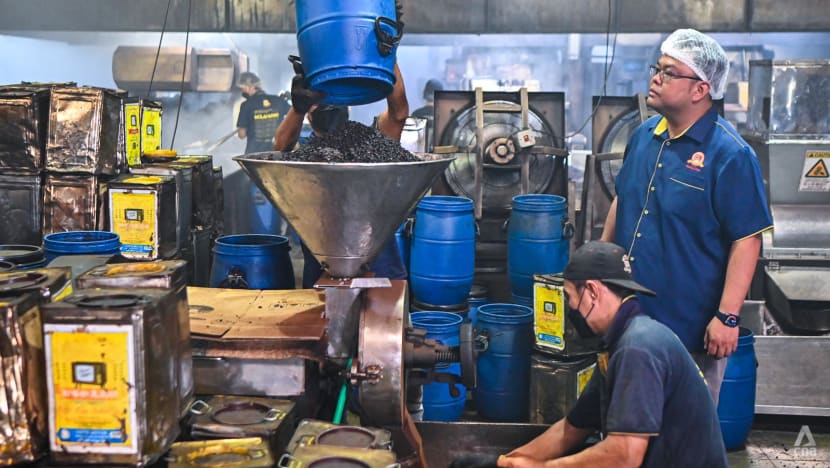
"30 PER CENT INCREASE IN ENQUIRIES SINCE JANUARY"
Goh Yong Kian, the third-generation owner and general manager of well-known local coffee manufacturer and wholesaler Kluang Coffee Powder Factory, supplies coffee powder to traditional coffee shops, canteens and cafes, many of which are located in Johor Bahru.
With these businesses seeing a surge in Singaporean customers, Goh expects an increase in the sale of his locally roasted coffee in the coming months.
“With the SEZ, a lot of Singaporeans and foreigners will come to Johor Bahru. That will help the local businesses like the coffee shops, and when their business grows, our business (here in Kluang) will also improve as they use more of our coffee powder,” the 36-year-old told CNA.
Goh also shared that some of his existing customers based in Malaysia’s capital of Kuala Lumpur are now expanding to Johor Bahru, eager to tap into the economic zone’s momentum.
To meet the growing demand, Goh plans to open a second factory adjacent to the existing one in the next two years, as current operations are reaching full capacity.
“Our production will increase by two to three times (with the new factory) and in the next two years, we are aiming for a 30 to 50 per cent increment in our export market,” Goh added.
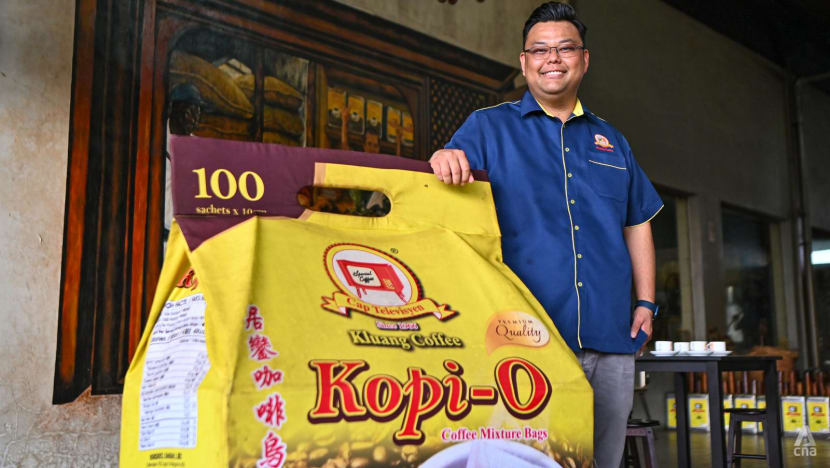
His company’s revenue comes from four main channels: Online sales, a retail store and cafe beside its factory, supermarket distribution and wholesale supply to coffee shops.
Its retail store is the “key source of revenue”, with a growing number of Singaporean tourists visiting the coffee factory, which offers tours.
Goh said that the factory recently welcomed 11 tour buses of Singaporean tourists on a single Saturday, with bookings continuing to roll in.
“Our retail component has seen the largest increase this year, with more than a 20 per cent rise in sales,” he told CNA.

Looking ahead, Goh expects the family business to grow even further once the Rapid Transit System (RTS) Link between Singapore and Johor Bahru begins operations in 2027.
“The RTS will make it even faster and more convenient for Singaporeans to visit our factory,” he said.
Meanwhile, logistics and manufacturing company SSAT, which provides storage solutions and supplies racking and shelving systems for warehouse infrastructure, told CNA that it has seen about a 30 per cent increase in enquiries from Singapore-based companies since the SEZ deal was signed in January.
“These companies are looking to expand their businesses in southern Johor and our racking systems can support their warehousing needs both there and in Singapore,” Lee Hui Ting, general manager at SSAT, said.
While these businesses are still in the “early stages” of enquiring services offered by SSAT as a storage partner, the general manager projects “a 10 to 15 per cent increase in business sales” next year as the SEZ continues to take shape.
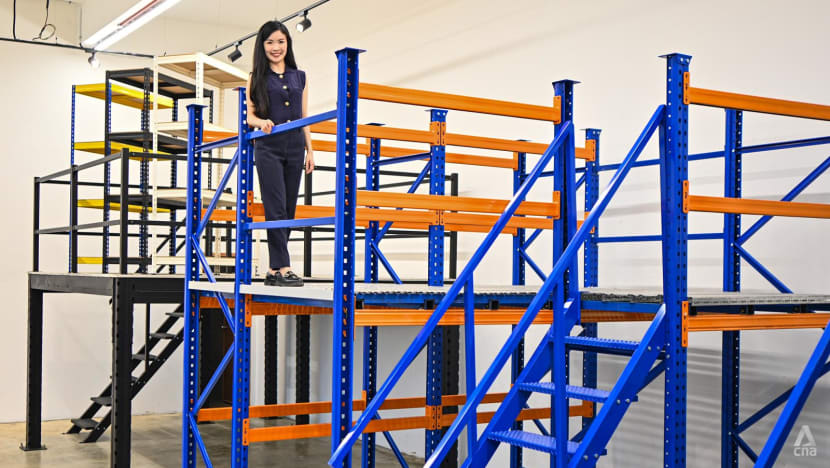
A CHEAPER, BETTER-CONNECTED "LOGISTICS HUB"?
Lee added that the improved infrastructure and more affordable cost of rent in Kluang will attract more investors and businesses to move there.
With the upcoming RTS Link and the ongoing Gemas-Johor Bahru Electrified Double Track Project, Kluang is on its way to becoming a logistics hub in Johor, Johor Chief Minister Onn Hafiz said in September last year.
The double track project by Malaysia’s national railway operator Keretapi Tanah Melayu Berhad aims to modernise the country’s rail network.
As part of the project, a 192km electric train service between Gemas in Negeri Sembilan and Johor Bahru linking Johor Bahru to Kluang is expected to begin operations in August, local media reported.
These projects in the transport sector would improve connectivity between districts like Kluang and the economic zone, he said then.
These developments, along with the PLUS highway expansion and federal upgrading works, will open up business job opportunities for the community in Kluang and the surrounding areas, Onn Hafiz said.
Lee of SSAT has already observed upgraded infrastructure such as “wider roads” along Jalan Batu Pahat - the main road linking Kluang to western Johor towns such as Ayer Hitam, Batu Pahat and Muar and the North-South Highway - which she said will ease the transportation of goods.
Echoing this, Teo from the Kluang Chinese Chamber of Commerce and Industry said that better accessibility, along with cheaper operational costs in Kluang compared to the city centre, could make the district a more appealing option for businesses looking to set up warehouses.
“The Gemas-Johor Bahru electric trains service is a gamechanger … we (Kluang) can position ourselves as the logistic backbone of the SEZ,” he said.
Francis Hutchinson, senior fellow and coordinator of the Malaysia studies programme at Singapore’s ISEAS-Yusof Ishak Institute, added: “Companies seeking to reduce real estate expenses could relocate to Kluang but still remain accessible to customers.”
According to property portal EdgeProp, the cost of land in Kluang is about RM158 (US$37) per square foot, making it three times more affordable than the RM393 per square foot in Johor Bahru, which lies within the SEZ.
“Kluang is right at the centre, we are at the heart of Johor, so logistics wise, with the electric train service launched, we are very convenient in terms of the transportation of goods and also human transport,” said Wong, the MP for Kluang.
Hutchinson said that the existing train link between Johor Bahru and Kluang has a travel time of about two hours, making it “unappealing for daily commutes”.
However, with the electric train service, travel time could come down to between 50 and 60 minutes, making it a more feasible option, he added.
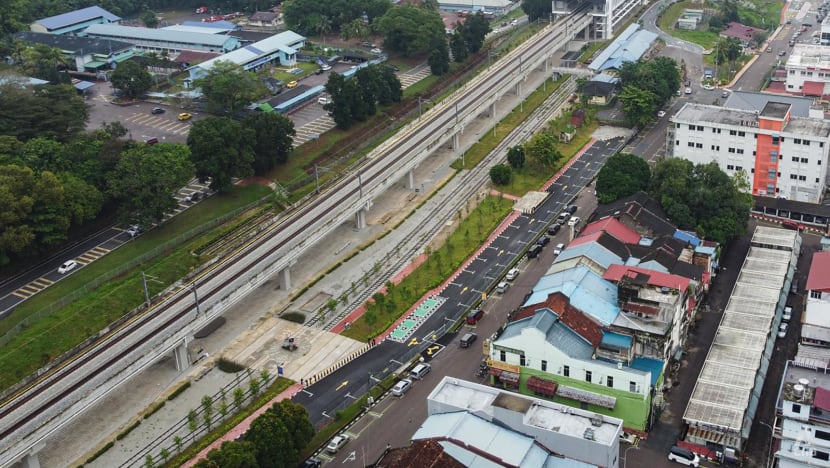
“As the infrastructure is being upgraded, we notice more warehouses here and factories being rented, the surrounding development is quite obvious,” Lee, who opened her showroom at Jalan Bukit Perdana in Kluang town less than a year ago, said.
“As a logistics provider, with the SEZ, I believe more logistics providers will move here into Kluang,” she added.
Teo of the Kluang Chinese Chamber of Commerce and Industry said that the infrastructural developments could transform Kluang into an “inland port” by consolidating goods and transporting them efficiently to Pasir Gudang and Iskandar Puteri, which are part of the SEZ.
“This will also generate jobs in transport, warehousing, cold-chain logistics and supply-chain management in Kluang, thus enhancing liveability to attract talents,” he said.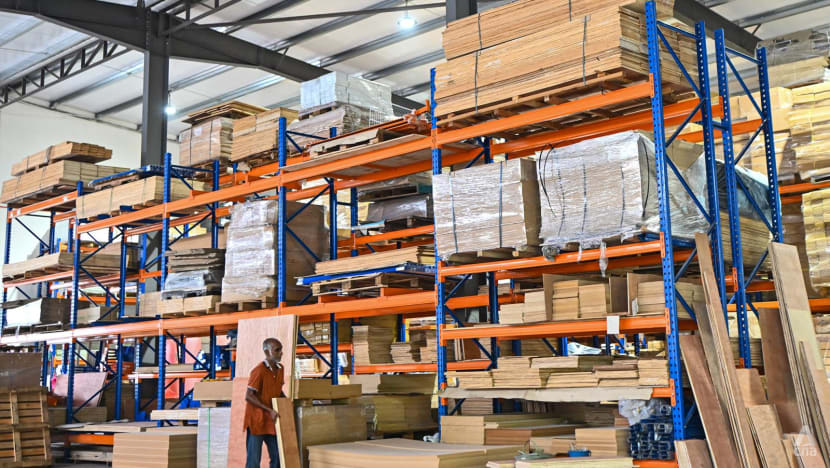
Besides the logistics and manufacturing industry, Teo said that the agro-food, hospitality and tourism industries also have a “comparative advantage” to capitalise on the spillover effects of the Johor-Singapore SEZ.
“Kluang has strong roots in agriculture and the Johor-Singapore SEZ could create growing demand for high-quality products, processed goods,” he told CNA.
“Our businesses should not only focus on supplying raw materials but also invest in agro-technology, food processing, packaging and halal food production.”
The SEZ aims to promote and facilitate investments across 11 sectors: Manufacturing, logistics, food security, tourism, energy, digital economy, green economy, financial services, business services, education and health.
While agro-food is not directly listed as one of these core sectors, industry players like UK Farm and Zenxin Organic Park hope to benefit indirectly by tapping into tourism opportunities and technological advancements potentially created by the SEZ.
“We are excited about the SEZ, but the spillover effect (for us) may not be as soon,” said Tai Seng Yee, executive director of Zenxin Organic Park. It is one of Malaysia’s largest public organic farms, and also a distributor and retailer of organic food.
With over 50 per cent of its organic vegetables exported to Singapore, Tai told CNA that export volumes have been “quite stagnant” in recent years.
He hopes that better connectivity with the upcoming RTS Link will attract more visitors to his farm on weekends, an important additional revenue stream for his business.
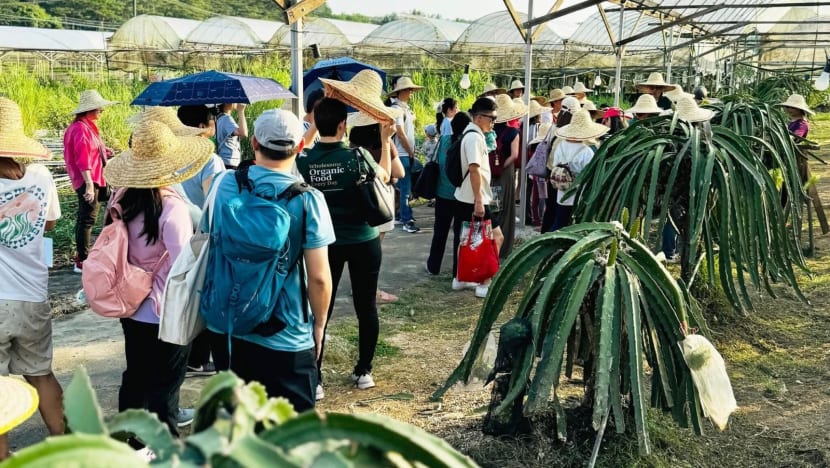
Both UK Farm and Zenxin Organic Park are situated within the Kluang Modern Agriculture Project, which spans about 9,000 acres and falls under the purview of Malaysia’s Ministry of Agriculture and Agro-Based Industry, extending to the Batu Pahat district.
Alizah Yusoff, business development and marketing manager of UK Farm, told CNA that the agriculture sector “has not yet received much interest within the SEZ”, but she hopes agritechnology will become a priority to enhance the production of better quality food products not just in Malaysia but also for export to the wider region.
“We imagine that if the SEZ extends into the agriculture sector, Malaysia could become a key supply hub for locally produced food products and this would mean we no longer have to rely so heavily on foreign imports,” she told CNA.
Beyond offering activities for visitors, UK Farm operates a goat farm and a corn plantation, where the corn is grown specifically to feed the goats. The farm sells and exports its fresh goat milk both locally and to markets such as Singapore.
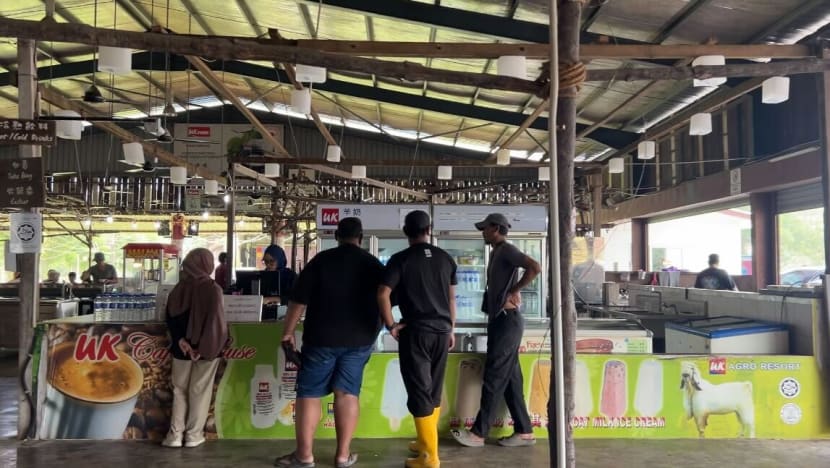
Alizah said investments in agritechnology at UK Farm have improved the management and quality of its corn plantation, resulting in better feed for the goats and higher-quality milk production.
She hopes for increased investment in the sector to benefit other industry players.
“We have ample land but lack sufficient investors in agrotechnology. Unlocking this potential could bring significant benefits, not only to our industry but also to our local communities, who could gain access to more affordable and nutritious food,” Alizah said, noting that these food products could be enjoyed domestically instead of relying on imports.
Wong, the MP for Kluang, added: “We are naturally an agricultural town from the very beginning … I do see that there is a bright future for our modern agriculture here in Kluang and I hope to see more young farmers and entrepreneurs joining the industry as well.”
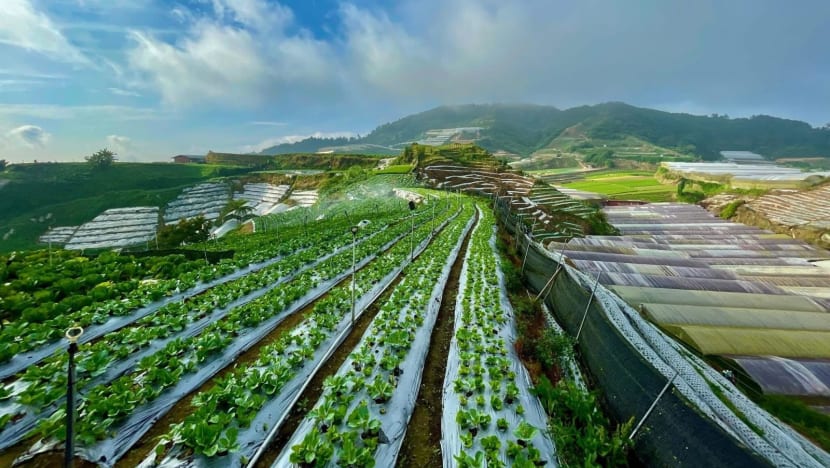
"WE NEED TO PROTECT OUR GREEN SPACES"
Hutchinson, the analyst from ISEAS Yusof-Ishak Institute, said that as the SEZ grows and connectivity between Kluang, Johor Bahru and Singapore improves, more people could choose to live in Kluang on a permanent basis while commuting daily to the special economic zone to work.
However Teo from the Chinese Chamber of Commerce and Industry warned that some of the rapid developments in the district could create socioeconomic pressure and infrastructural strain.
“Our existing infrastructure such as roads, water supply and waste management systems may not support a sudden population boom and we need plans to upgrade and prevent bottlenecks and a decline in public service quality,” Teo, who is also the deputy president of the Johor Associated Chinese Chamber of Commerce and Industry, said.
“Unregulated growth can erase Kluang’s unique heritage and small town charm and the developments must preserve our culture and identity,” he added.

He said the government needs to serve as a “proactive facilitator” and propose a comprehensive infrastructure and zoning master plan for Kluang.
“It’s about smart planning, we need to protect our green areas and heritage zones while designating specific areas for new industrial parks, commercial centres and residential developments to be ‘investor-ready’,” said Teo, who is also a realtor.
He also cautioned that opportunities in the SEZ may attract Kluang’s brightest talents away with the high salaries and career opportunities in the city centre, raising concerns about whether there are enough local high-value jobs to retain and attract these talents.
“We must avoid becoming just a labour supplier, but also build a strong, competitive local economy,” he added.
The business leader also proposed the establishment of a Kluang-SEZ Special Task Force involving representatives from the state government, local municipal office, business associations and key investors.
“The sole purpose of this task force would be to coordinate efforts, cut through red tape and ensure that the development of Kluang is aligned with opportunities flowing from the SEZ,” Teo added.
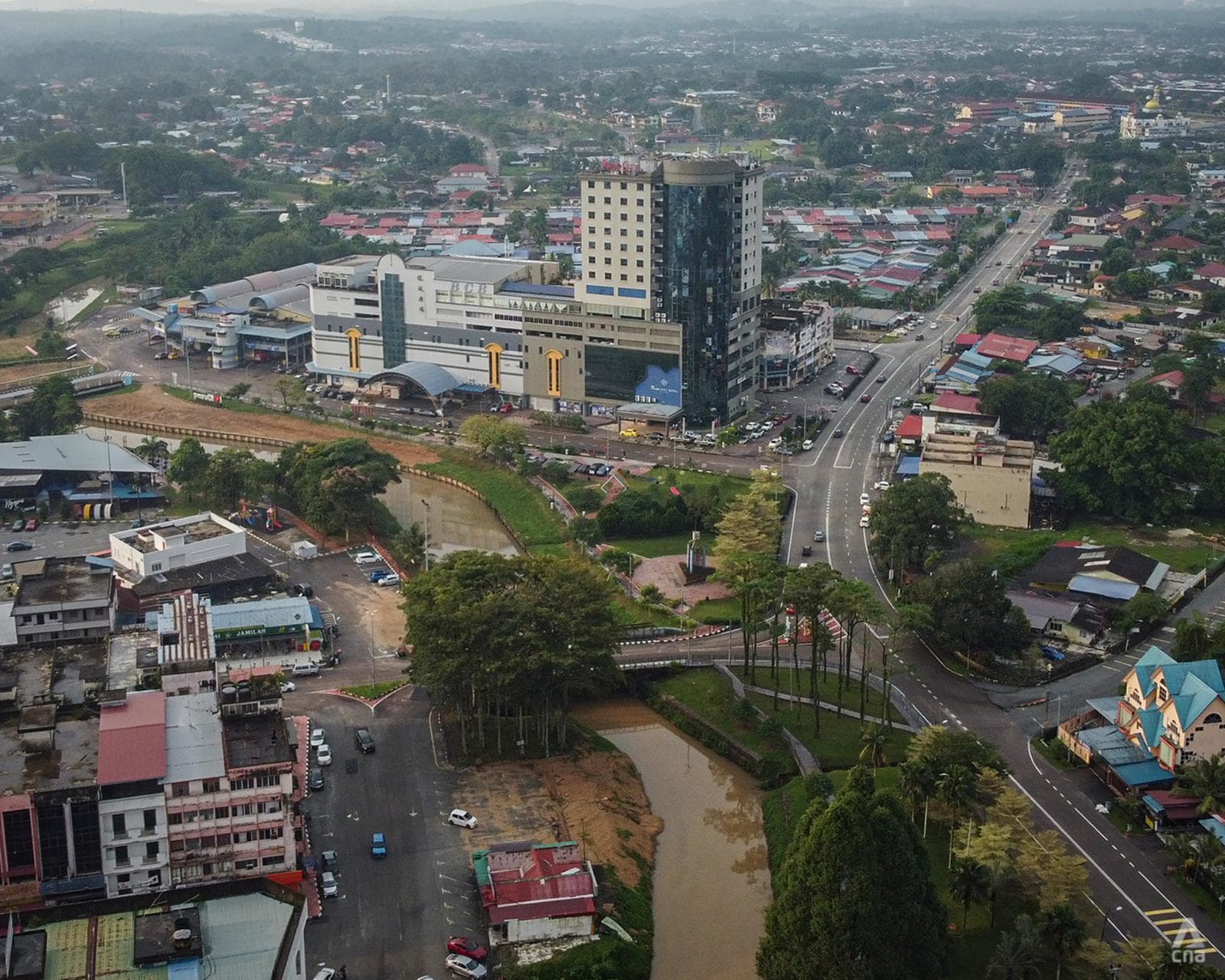
CAN THE SEZ BENEFIT ALL 10 JOHOR DISTRICTS?
While on an official visit to Singapore on Wednesday (Jul 30), Onn Hafiz said in a Facebook post that strategic cooperation between Johor, Malaysia and Singapore must continue to be enhanced to ensure inclusive, equitable and sustainable development so that “no one is left behind”.
He had said on Jul 6 all 10 districts of Johor stand to benefit from the SEZ because of all the ongoing developments taking place throughout the state, such as transportation infrastructure, housing projects and tourism.
“Do not think that the benefits of the JS-SEZ will only be concentrated in the Johor Bahru area,” he said.
Johor's 10 districts are: Batu Pahat, Johor Bahru, Kluang, Kota Tinggi, Kulai, Mersing, Muar, Pontian, Segamat and Tangkak.
The state recorded RM30.1 billion in approved investments in the first quarter of this year, which is the highest in Malaysia, local media reported.
Syed Saddiq Abdul Rahman, MP for Muar district in northern Johor, expressed hope that despite its geographical distance from Singapore, the district can still experience a “trickle-down effect” from the SEZ.
He highlighted growing industries that could complement the zone.
“Muar is one of the largest exporters of furniture and nurseries. We also have a few big semiconductor factories based in Muar,” Syed Saddiq told CNA, noting that the district exports about RM13 billion worth of furniture annually.
Unlike in Kluang, he noted that Muar has yet to see spillover effects of the SEZ, such as major investments, job creations, new factories or small businesses opening up in large numbers.
Muar is about 100km northwest of Kluang and 170km away from Johor Bahru.
Meanwhile, ISEAS Yusof-Ishak Institute’s Hutchinson identified districts like Batu Pahat and Segamat to be other potential satellite towns in Johor as they could be drawn into Kluang’s economy if its development accelerates, especially with improved transportation networks.
Batu Pahat, located about 50km or an hour's drive from Kluang, was earlier proposed as one of the stops for the potential high-speed rail between Singapore and Kuala Lumpur, Hutchinson said.
He added that for Segamat, when the electric train service becomes operational, it will cut travel time between Johor Bahru and the district to about one-and-a-half hours, potentially making daily commutes feasible,
Current travel time for the 180km between Segamat and Johor Bahru city centre is nearly four hours by the existing train network.
Syed Saddiq hopes that northern Johor could benefit from the special economic zone to avoid widening inequality across the state.
“My hope is that there will be a greater focus on developing northern Johor, if not, this will definitely widen the economic disparity (between the north and south),” he said.
But to do that, analyst Serina Rahman from ISEAS-Yusof Ishak Institute said that each Johor district would have to find its own unique selling points or enhance existing strengths to stand out.
She added that it remains unclear how niche industries in other parts of Johor will be integrated into the zone’s long-term vision.
“Pontian district and Simpang Renggam (in Kluang) are known for its fisheries and pineapple farms while Batu Pahat (is known) for its nurseries and agriculture (so) how these industries could benefit from the SEZ is the question,” she told CNA.
“Each district is so unique and there is no one-size-fits-all answer,” she said.






















